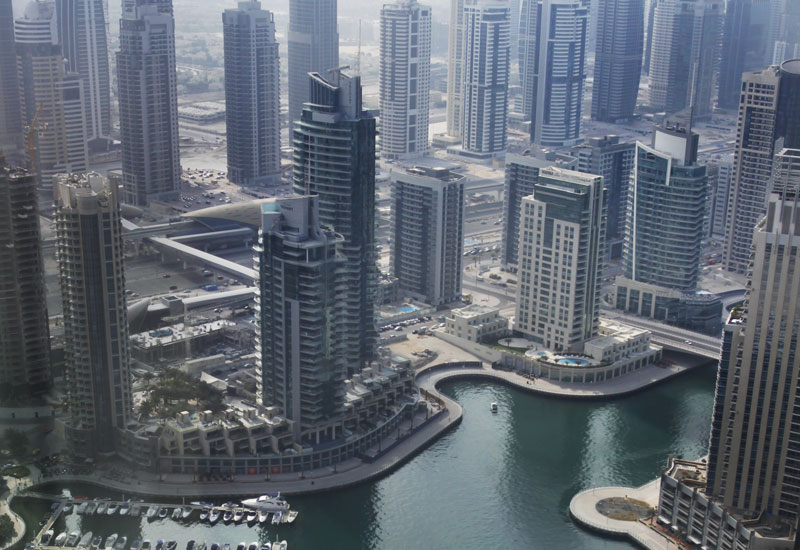 Dubai hotel occupancy fell 12.5 percentage points to 54.6% in July according to the latest HotStats report by TRI Hospitality Consulting Middle East.
Dubai hotel occupancy fell 12.5 percentage points to 54.6% in July according to the latest HotStats report by TRI Hospitality Consulting Middle East.
In Kuwait, RevPAR declined 2.2% to $101.02, driven by a fall in ARR of 3.8% to US$236.15. Hotels registered growth in occupancy of 0.7 percentage points to 42.8%, while TrevPAR was up 13.9% to US$245.86.
Jeddah, Saudi Arabia, registered strong performance in July, benefitting from tourism during peak season coupled with being a popular stopover destination for pilgrims headed to the holy cities of Makkah and Madinah during Ramadan.
Jeddah hotels posted occupancy levels of 81.2%, down 2.7% from the previous year. The city was the only market surveyed by HotStats to see positive RevPAR growth, which was up 11.6% to $214.75, driven by a 15.3% growth in rates.

| Advertisement |
Jeddah hotels reported the highest profit margins in July among the markets surveyed with a GOPPAR of US$174.68, up 21.5% from the previous year, led by an average room rate of $264.48.
On the other hand, Riyadh suffered a decline in performance during 2013. The marginal increase in average rates of 0.9% was insufficient to negate the 4.2 percentage point decline in occupancy to 43.9%, which drove RevPAR down 7.9% to $96. Although, TrevPAR increased 3.7% to $171.92 and exceeded the year to date growth of 0.8%, profitability declined 10.3% to US$53.20 due to low occupancy.
“Occupancies in Jeddah have exceeded 80% for the third consecutive month, as the market continues to see strong demand from leisure tourists during peak season. Additionally, Jeddah generated additional demand from Umrah pilgrims stopping over on their way Makkah and Madinah during the holy month of Ramadan. Riyadh continues to struggle due to the lack of corporate activity that generally provides a demand base during high season. During the summer, the royal family and government of Saudi Arabia relocate to Jeddah from Riyadh, resulting in negative occupancy growth that places heavy pressure on the bottom line,” explained Goddard.
In Egypt, Cairo suffered due to the political instability caused by the ousting of Mohamed Mursi. Occupancy plummeted 23.5 percentage points to 21.3% and induced a corresponding drop in RevPAR of 46% to US$25.31.
ARR increased 13.4% from the previous year and reached $118.68 due to high inflation and hoteliers holding rates. Profitably declined by 88.1% following a 42.6% decrease in TrevPAR.
While Sharm Al Sheikh was not severely affected by the turmoil in Cairo, the demonstrations had some impact on RevPAR recovery in the city, with RevPAR declining 10.4% to $23.41. This was largely driven by the 7.5% fall in occupancy to 58.2%, while ARR increased 1.2% to $40.24. Coupled with a 7.5% decline in TrevPAR, GOPPAR declined 20.6% to $13.27.
“Tourism is a critical element of Egypt’s economy, accounting for 13% of GDP at its peak in 2010, when the country drew 14.7 million visitors. Although hotels in Cairo and Sharm El Sheikh shared signs of recovery in the first two quarters of the year, progress has regressed yet again. During the first half of July Egypt saw 387,000 tourist arrivals, which is a 25% decline when compared to the same period of the previous year. Tourists are highly reactive to political unrest, as reflected in the fluctuations in hotel performance levels that corresponded to periods of upheaval across the past two years. This was reinforced yet again, as events surrounding Mursi’s ousting directly impacted hotel occupancy levels, as illustrated in Cairo and to a lower extent, in Sharm El Sheikh,” said Goddard.








 Search our database of more than 2,700 industry companies
Search our database of more than 2,700 industry companies









